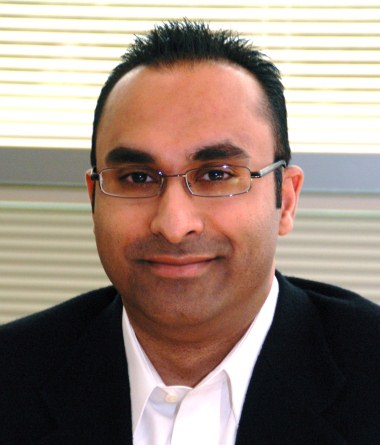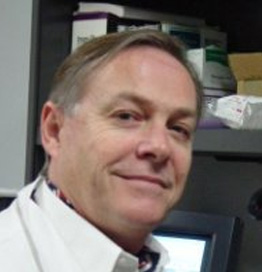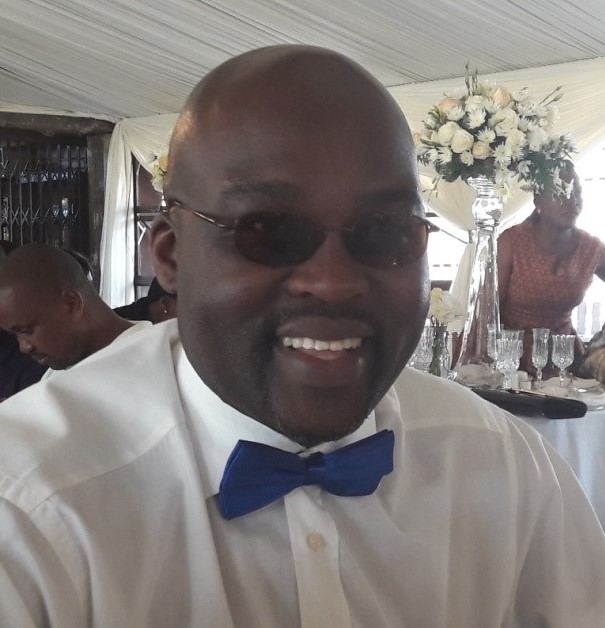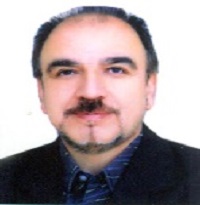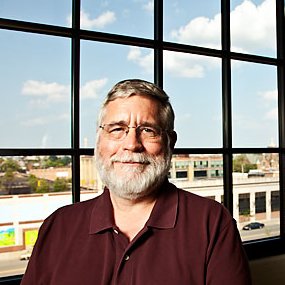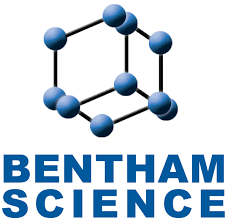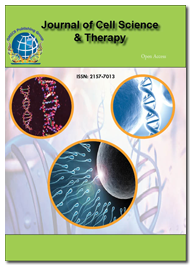Theme: “ Past, Present and Future : Approaches in Biobanking and its allied areas â€
Biobanking 2018
Biobanking 2018 invites all the participants across the globe to attend the 12th International conference & exhibition on Tissue Preservation and Biobanking November 9-10, 2018 Atlanta, USA. Biobanking 2018 aims in proclaim knowledge and share innovative ideas amongst the professionals, industrialists and students from research area of Tissue engineering and Biobanking to share their research experiences and indulge in interactive discussions at the event. This scientific gathering guarantees that offering the thoughts and ideas will enable and secure you the theme “ Past, Present and Future : Approaches in Biobanking and its allied areas ”. The current era fully rolled out with many new advanced technologies. In such case more Biobank research institutes were newly introduced within market which obviously shows the market growth of Tissue preservation and Biobanking.
Details of Biobanking 2018 conference in the USA
Conference Series LLC Ltd. is organizing Genome 2018 conference during November 09-10,2018 at Atlanta, USA. We organize Genetics and Molecular Biology meetings globally in the fields related to Genomics, Pharmacogenomics, Tissue preservation, Regenerative Medicine, Biobanking, and Tissue Engineering.
|
Conference Name |
Place |
Date |
|
Biobanking 2018 conference |
Atlanta,USA |
Nov 09-10,2018 |
Why to attend Biobanking 2018?
This unique international conference provides a platform for researchers and decision makers in biobank research to present their latest findings and learn about all the important developments in biobanking research. With members from around the world focused on learning about Biobanking, this is the best opportunity to reach the largest assemblage of participants from the Biobank research community. Conduct demonstrations, distribute information, acquire knowledge about current and trending Tissue Preservation and Biobanking technologies, make a splash with a new research, and receive name recognition at this 2-day event. World-renowned speakers, the most recent techniques, tactics, and the newest updates in fields are hallmarks of this conference.
Target Audience:
Biobanking Faculty
Medical Colleges
Biobanking Associations and Societies
Business Entrepreneurs
Training Institutes
Cryo storage Companies
Data Management Companies
Global Biobanking Companies
Biobanking investors
Biobanking play a crucial role in biomedical research. The wide array of bio specimens (including blood, saliva, plasma, and purified DNA) maintained in biobanks can be described as libraries of the human organism. They are carefully characterized to determine the general and unique features of the continuous cell line and the absence or presence of contaminants, therefore establishing a fundamental understanding about the raw material from which the biological product is being derived and maintained. Biobanks catalogue specimens using genetic and other traits, such as age, gender, blood type, and ethnicity. Some samples are also categorized according to environmental factors, such as whether the donor had been exposed to radiation, asbestos, or some other substance that can affect human genes.
Related conferences
8th Biobanking Conference and Exhibition, 2018 June 2018, Kensington Forum, London,UK; International conference & Exhibition on Tissue Engineering and Biobanking, April 12-13, 2018, Las Vegas, NV, United States; 20th International conference on Biomaterials and Tissue engineering, January 18-19,2018 London,UK; 19th International Conference on Tissue Engineering and Regenerative Medicine Applications, sep 21-22,2018,Paris,France; 9th International Conference on Tissue Engineering and Regenerative Medicine November 7-8 , 2018 Atlanta, Georgia, USA; 3rd World Congress on Human Genetics and Genetic Disorders, October 20-21, 2017 Toronto, Canada; 9th International Conference & Exhibition on Tissue Preservation and Biobanking, November 7-8, 2018 Atlanta, USA.
Bio specimen and Biorepository
A Biorepository is a biological materials repository that collects, processes, stores, and distributes bio specimens to support future scientific investigation. Biorepositories can contain or manage specimens from animals, including humans, and many other living organisms. Vertebrates, invertebrates, arthropods, and other life-forms are just a few of the many classes of living organisms which can be studied by preserving and storing samples taken. The Biorepository assures the quality, and manages the accessibility and distribution/disposition of the bio specimens in its collection. There are a huge number of biorepositories in the United States, which shift broadly by size, the sort of biospecimen gathered, and reason. One of the biorepository's most elevated needs is ensuring the security and sacredness of individual and medicinal data. Bio specimens are materials taken from the human body, for example, tissue, blood, plasma, and pee that can be utilized for growth determination and investigation. At the point when patients have a biopsy, surgery, or other methodology, regularly a little measure of the example evacuated can be put away and utilized for later research. Once these specimens have been legitimately prepared and put away they are known as human bio specimens. Specialists and scientists might break down biospecimen to search for signs of ailment in the contributor. Bio specimens can affirm whether a malady is available or truant in a specific patient; however they likewise give other data that might be valuable to the doctor or a specialist. Every example might contain DNA, proteins, and different particles essential for comprehension ailment movement.
Related conferences
8th Biobanking Conference and Exhibition, 2018 June 2018, Kensington Forum, London,UK; International conference & Exhibition on Tissue Engineering and Biobanking, April 12-13, 2018, Las Vegas, NV, United States; 20th International conference on Biomaterials and Tissue engineering, January 18-19,2018 London,UK; 19th International Conference on Tissue Engineering and Regenerative Medicine Applications, sep 21-22,2018,Paris,France; 9th International Conference on Tissue Engineering and Regenerative Medicine November 7-8 , 2018 Atlanta, Georgia, USA; 3rd World Congress on Human Genetics and Genetic Disorders, October 20-21, 2017 Toronto, Canada; 9th International Conference & Exhibition on Tissue Preservation and Biobanking, November 7-8, 2018 Atlanta, USA.
Biopreservation and its advances
Moving rapidly from science fiction to science fact, cryopreservation is an integral part of many research, development, and production processes in industry and academia. The preservation sciences have emerged as an interdisciplinary platform that incorporates the fundamentals of cell and molecular biology, and bioengineering, with the classic methodological approaches to freezing and drying living matter. Researchers and biotech companies must scramble to learn about, and adopt, the new preservation strategies that incorporate the classic and the new molecular-based approaches.
Related conferences
8th Biobanking Conference and Exhibition, 2018 June 2018, Kensington Forum, London,UK; International conference & Exhibition on Tissue Engineering and Biobanking, April 12-13, 2018, Las Vegas, NV, United States; 20th International conference on Biomaterials and Tissue engineering, January 18-19,2018 London,UK; 19th International Conference on Tissue Engineering and Regenerative Medicine Applications, sep 21-22,2018,Paris,France; 9th International Conference on Tissue Engineering and Regenerative Medicine November 7-8 , 2018 Atlanta, Georgia, USA; 3rd World Congress on Human Genetics and Genetic Disorders, October 20-21, 2017 Toronto, Canada; 9th International Conference & Exhibition on Tissue Preservation and Biobanking, November 7-8, 2018 Atlanta, USA.
Tissue engineering is emerging as a significant potential alternative or complementary solution, whereby tissue and organ failure is addressed by implanting natural, synthetic, or semisynthetic tissue and organ mimics that are fully functional from the start, or that grow into the required functionality. Initial efforts have focused on skin equivalents for treating burns, but an increasing number of tissue types are now being engineered, as well as biomaterials and scaffolds used as delivery systems. A variety of approaches are used to coax differentiated or undifferentiated cells, such as stem cells, into the desired cell type. Notable results include tissue-engineered bone, blood vessels, liver, muscle, and even nerve conduits. As a result of the medical and market potential, there is significant academic and corporate interest in this technology.
Related conferences
8th Biobanking Conference and Exhibition, 2018 June 2018, Kensington Forum, London,UK; International conference & Exhibition on Tissue Engineering and Biobanking, April 12-13, 2018, Las Vegas, NV, United States; 20th International conference on Biomaterials and Tissue engineering, January 18-19,2018 London,UK; 19th International Conference on Tissue Engineering and Regenerative Medicine Applications, sep 21-22,2018,Paris,France; 9th International Conference on Tissue Engineering and Regenerative Medicine November 7-8 , 2018 Atlanta, Georgia, USA; 3rd World Congress on Human Genetics and Genetic Disorders, October 20-21, 2017 Toronto, Canada; 9th International Conference & Exhibition on Tissue Preservation and Biobanking, November 7-8, 2018 Atlanta, USA.
Scaffolds for Tissue Engineering
Tissue engineering along with regenerative medicine can be used to create ‘Scaffolds’ in the human body. These scaffolds are used to support organs and organ systems that may have been damaged after injury or disease. So what is tissue engineering? ‘Tissue engineering is the use of a combination of cells, engineering and materials methods, and suitable biochemical and physico-chemical factors to improve or replace biological functions’. This is most commonly achieved through the use of stem cells. Stem cells are unique types of cells that are undifferentiated. So the main focus of creating these constructs is to be able to safely deliver these stem cells, and create a structure that is physically and mechanically stable so that these stem cells can differentiate. Scaffolds are of great importance in clinical medicine. It is an upcoming field, and usually associated with conditions involving organ disease or failure. It is used to rebuild organs and return normal function.
Related conferences
8th Biobanking Conference and Exhibition, 2018 June 2018, Kensington Forum, London,UK; International conference & Exhibition on Tissue Engineering and Biobanking, April 12-13, 2018, Las Vegas, NV, United States; 20th International conference on Biomaterials and Tissue engineering, January 18-19,2018 London,UK; 19th International Conference on Tissue Engineering and Regenerative Medicine Applications, sep 21-22,2018,Paris,France; 9th International Conference on Tissue Engineering and Regenerative Medicine November 7-8 , 2018 Atlanta, Georgia, USA; 3rd World Congress on Human Genetics and Genetic Disorders, October 20-21, 2017 Toronto, Canada; 9th International Conference & Exhibition on Tissue Preservation and Biobanking, November 7-8, 2018 Atlanta, USA.
Stem cell and Stem cell biobanking
Stem cells contribute to innate healing and harbor a promising role for regenerative medicine. Stem cell banking through long-term storage of different stem cell platforms represents a fundamental source to preserve original features of stem cells for patient-specific clinical applications. Stem cell research and clinical translation constitute fundamental and indivisible modules catalyzed through biobanking activity, generating a return of investment.
Related conferences
8th Biobanking Conference and Exhibition, 2018 June 2018, Kensington Forum, London,UK; International conference & Exhibition on Tissue Engineering and Biobanking, April 12-13, 2018, Las Vegas, NV, United States; 20th International conference on Biomaterials and Tissue engineering, January 18-19,2018 London,UK; 19th International Conference on Tissue Engineering and Regenerative Medicine Applications, sep 21-22,2018,Paris,France; 9th International Conference on Tissue Engineering and Regenerative Medicine November 7-8 , 2018 Atlanta, Georgia, USA; 3rd World Congress on Human Genetics and Genetic Disorders, October 20-21, 2017 Toronto, Canada; 9th International Conference & Exhibition on Tissue Preservation and Biobanking, November 7-8, 2018 Atlanta, USA.
Although most living organisms are composed of large amounts of water, it is not inevitable that freezing these organisms results in ice-formation. Among amphibians and insects that can tolerate freezing, there is wide variation in the amount of freezing they can tolerate. Species of frogs can spend days or weeks "with as much as 65 percent of their total body water as ice". Some amphibians achieve their protection due to the glycerol manufactured by their livers. Glycerol is "antifreeze", it reduces ice formation and lowers freezing point. Glycerol (glycerin), like ethylene glycol (automobile anti-freeze) is cryoprotectants. The sugar glucose is also cryoprotectants — and arctic frogs have a special form of insulin that accelerates glucose release and absorption into cells as temperatures approach freezing. Cryoprotectants can make water harden like glass — with no crystal formation — a process called Vitrification. Freezing-damage to cells is due to the formation of ice-crystals. Entire organs can be solidified and stored at temperatures as low as -140° C. Scientists are working on ways to reduce the toxicity of the cryoprotectants used to make water vitrify to allow banking of organs for transplantation. At Alcor, we are optimistic that the toxicity that still does occur with vitrification of human organs will be reversible with future molecular repair technology.
Related conferences
8th Biobanking Conference and Exhibition, 2018 June 2018, Kensington Forum, London,UK; International conference & Exhibition on Tissue Engineering and Biobanking, April 12-13, 2018, Las Vegas, NV, United States; 20th International conference on Biomaterials and Tissue engineering, January 18-19,2018 London,UK; 19th International Conference on Tissue Engineering and Regenerative Medicine Applications, sep 21-22,2018,Paris,France; 9th International Conference on Tissue Engineering and Regenerative Medicine November 7-8 , 2018 Atlanta, Georgia, USA; 3rd World Congress on Human Genetics and Genetic Disorders, October 20-21, 2017 Toronto, Canada; 9th International Conference & Exhibition on Tissue Preservation and Biobanking, November 7-8, 2018 Atlanta, USA.
Cryopreservation methods
A process where cells, whole tissues, or any other substances susceptible to damage caused by chemical reactivity or time are preserved by cooling to sub-zero temperatures. At low enough temperatures, any enzymatic or chemical activity which might cause damage to the material in question is effectively stopped. Cryopreservation methods seek to reach low temperatures without causing additional damage caused by the formation of ice during freezing. Traditional cryopreservation has relied on coating the material to be frozen with a class of molecules termed cryoprotectants. New methods are constantly being investigated due to the inherent toxicity of many cryoprotectants. By default it should be considered that Cryopreservation alters/compromises the structure and function of cells unless it is proven otherwise for a particular cell population. Tissue and fluid preservation, also known as biobanking, biorepository science, or cryopreservation often referred to as cryobanking has become mainstream and big business.
Related conferences
8th Biobanking Conference and Exhibition, 2018 June 2018, Kensington Forum, London,UK; International conference & Exhibition on Tissue Engineering and Biobanking, April 12-13, 2018, Las Vegas, NV, United States; 20th International conference on Biomaterials and Tissue engineering, January 18-19,2018 London,UK; 19th International Conference on Tissue Engineering and Regenerative Medicine Applications, sep 21-22,2018,Paris,France; 9th International Conference on Tissue Engineering and Regenerative Medicine November 7-8 , 2018 Atlanta, Georgia, USA; 3rd World Congress on Human Genetics and Genetic Disorders, October 20-21, 2017 Toronto, Canada; 9th International Conference & Exhibition on Tissue Preservation and Biobanking, November 7-8, 2018 Atlanta, USA.
Biorepositories provide a resource for researchers to increase understanding of complex diseases. Studies such as the Lung Genomics Research Consortium (LGRC), a two-year project launched in October 2009, are going a step further than standard biobanking practices and characterizing the samples with their molecular makeup. The molecular data can then be mined along with the clinical data. Led by National Jewish Health and funded by the National Heart, Lung and Blood Institute, a division of the National Institutes of Health (NIH), the LGRC project consists of five institutions, including Dana-Farber Cancer Institute. Collaborators in the project work with samples banked at the Lung Tissue Research Consortium (LTRC), which houses tissue samples and blood from lung disease sufferers, primarily chronic obstructive pulmonary disease (COPD), along with a rich set of clinical data from patients.
Related conferences
8th Biobanking Conference and Exhibition, 2018 June 2018, Kensington Forum, London,UK; International conference & Exhibition on Tissue Engineering and Biobanking, April 12-13, 2018, Las Vegas, NV, United States; 20th International conference on Biomaterials and Tissue engineering, January 18-19,2018 London,UK; 19th International Conference on Tissue Engineering and Regenerative Medicine Applications, sep 21-22,2018,Paris,France; 9th International Conference on Tissue Engineering and Regenerative Medicine November 7-8 , 2018 Atlanta, Georgia, USA; 3rd World Congress on Human Genetics and Genetic Disorders, October 20-21, 2017 Toronto, Canada; 9th International Conference & Exhibition on Tissue Preservation and Biobanking, November 7-8, 2018 Atlanta, USA.
Quality management in Biobanking
Biomedical investigators require high quality human tissue to support their research; thus, an important aspect of the provision of tissues by biorepositories is the assurance of high quality and consistency of processing specimens. This is best accomplished by a quality management system (QMS). The basis of a QMS program designed to aid biorepositories that want to improve their operations. In 1983, the UAB Tissue Collection and Biobanking Facility (TCBF) introduced a QMS program focused on providing solid tissues to support a wide range of research; this QMS included a quality control examination of the specific specimens provided for research. Similarly, the Division of Laboratory Sciences at the Centers for Disease Control and Prevention (CDC) introduced a QMS program for their laboratory analyses, focused primarily on bodily fluids. The authors of this article bring together the experience of the QMS programs at these two sites to facilitate the development or improvement of quality management systems of a wide range of biorepositories.
Related conferences
8th Biobanking Conference and Exhibition, 2018 June 2018, Kensington Forum, London,UK; International conference & Exhibition on Tissue Engineering and Biobanking, April 12-13, 2018, Las Vegas, NV, United States; 20th International conference on Biomaterials and Tissue engineering, January 18-19,2018 London,UK; 19th International Conference on Tissue Engineering and Regenerative Medicine Applications, sep 21-22,2018,Paris,France; 9th International Conference on Tissue Engineering and Regenerative Medicine November 7-8 , 2018 Atlanta, Georgia, USA; 3rd World Congress on Human Genetics and Genetic Disorders, October 20-21, 2017 Toronto, Canada; 9th International Conference & Exhibition on Tissue Preservation and Biobanking, November 7-8, 2018 Atlanta, USA.
Fertility preservation is the effort to help cancer patients retain their fertility, or ability to procreate. Research into how cancer affects reproductive health and preservation options are growing, sparked in part by the increase in the survival rate of cancer patients. The main methods of fertility preservation are ovarian protection by GnRH agonists, cryopreservation of ovarian tissue, eggs or sperm, or of embryos after in vitro fertilization. The patient may also choose to use egg or sperm from a donor by third party reproduction rather than having biological children.
Related conferences
8th Biobanking Conference and Exhibition, 2018 June 2018, Kensington Forum, London,UK; International conference & Exhibition on Tissue Engineering and Biobanking, April 12-13, 2018, Las Vegas, NV, United States; 20th International conference on Biomaterials and Tissue engineering, January 18-19,2018 London,UK; 19th International Conference on Tissue Engineering and Regenerative Medicine Applications, sep 21-22,2018,Paris,France; 9th International Conference on Tissue Engineering and Regenerative Medicine November 7-8 , 2018 Atlanta, Georgia, USA; 3rd World Congress on Human Genetics and Genetic Disorders, October 20-21, 2017 Toronto, Canada; 9th International Conference & Exhibition on Tissue Preservation and Biobanking, November 7-8, 2018 Atlanta, USA.
The Cancer Human Biobank (caHUB) is a BBRB induced system that finishes specific biospecimen and data acquisitions to reinforce biospecimen science works out. The caHUB framework involves the going with sections Bio examples Source Sites (BSSs) are relationship, for instance, insightful remedial concentrates, quick after death examination centers, and organ securing affiliations, that get tireless consent, get cases, and watercraft them to one of different undertaking areas. The Comprehensive Bio examples Resource (CBR) is a consolidated site that hoards amassing and transportation packs, gets most bio samples from the BSSs for taking care of and limit, and water crafts bio examples from the BSSs to the get ready and examination workplaces. The CBR moreover makes H&E fragments from FFPE squares and conveys propelled photos of these regions. The Comprehensive Data Resource (CDR) is a concentrated data storeroom that secures patient and illustration data from BSSs and other undertaking areas that handle and examinations tests. The Pathology Resource Center (PRC) is an arrangement of board avowed pathologists who review H&E sections from caHUB assembled samples as a quality control measure moreover give particular bearing to caHUB Bio example's gatherings.
The Cancer Human Biobank Human Biobank (caHUB) is a Biospecimen Source Sites that collects human cancer tissue of donors with a variety of disorders, but also of non-diseased donors. This cancer tissue, together with an anonymized summary of a donor’s medical record, is sent to scientific researchers worldwide, with the ultimate aim of increasing our understanding of the human cancer and to develop therapies for treatment of cancer.
Related conferences
8th Biobanking Conference and Exhibition, 2018 June 2018, Kensington Forum, London,UK; International conference & Exhibition on Tissue Engineering and Biobanking, April 12-13, 2018, Las Vegas, NV, United States; 20th International conference on Biomaterials and Tissue engineering, January 18-19,2018 London,UK; 19th International Conference on Tissue Engineering and Regenerative Medicine Applications, sep 21-22,2018,Paris,France; 9th International Conference on Tissue Engineering and Regenerative Medicine November 7-8 , 2018 Atlanta, Georgia, USA; 3rd World Congress on Human Genetics and Genetic Disorders, October 20-21, 2017 Toronto, Canada; 9th International Conference & Exhibition on Tissue Preservation and Biobanking, November 7-8, 2018 Atlanta, USA.
Biobanking is an essential tool to provide access to high quality human biomaterial for fundamental and translational research. Research for rare disorders benefits from the provision of human biomaterials through biobanks, and each human sample from a person with a rare disorder has a high value as it may hold the key to answer an important research question. Transnational cooperation in biobanking is an important catalyst to share limited resources and achieve optimal outcomes as in other areas of rare disorder research.
Related conferences
8th Biobanking Conference and Exhibition, 2018 June 2018, Kensington Forum, London,UK; International conference & Exhibition on Tissue Engineering and Biobanking, April 12-13, 2018, Las Vegas, NV, United States; 20th International conference on Biomaterials and Tissue engineering, January 18-19,2018 London,UK; 19th International Conference on Tissue Engineering and Regenerative Medicine Applications, sep 21-22,2018,Paris,France; 9th International Conference on Tissue Engineering and Regenerative Medicine November 7-8 , 2018 Atlanta, Georgia, USA; 3rd World Congress on Human Genetics and Genetic Disorders, October 20-21, 2017 Toronto, Canada; 9th International Conference & Exhibition on Tissue Preservation and Biobanking, November 7-8, 2018 Atlanta, USA.
Ethics of research biobanking.
Ethical issues are commonly present in many aspects of Biobanking. The fact that Biobanks deal with human samples, invading an individual autonomy or limiting self-control, provokes a number of ethical issues. Who is actually competent to give informed consent and donate a sample? When individuals donate part of their body to a biobank, how is that human sample processed? Who is the owner of the sample? Who should decide how it should be used? Who has the right to know individual results of research? These and many more ethical dilemmas exist in the ethical framework of biobanks. With the recent rapid developments in biobanking, all of these issues are magnified with plenty of further new questions continuously arising. Ethical framework has been the most controversial issue in the domain of biobanking. Thus, it is not surprising that there is a substantial literature focusing on ethical dilemmas in biobanking, such as informed consent, privacy, protection, and returning of results to participants. For many years, researchers at CRB have provided constructive advice on how to deal with ethical aspects of research using human tissue material and personal data.
Related conferences
8th Biobanking Conference and Exhibition, 2018 June 2018, Kensington Forum, London,UK; International conference & Exhibition on Tissue Engineering and Biobanking, April 12-13, 2018, Las Vegas, NV, United States; 20th International conference on Biomaterials and Tissue engineering, January 18-19,2018 London,UK; 19th International Conference on Tissue Engineering and Regenerative Medicine Applications, sep 21-22,2018,Paris,France; 9th International Conference on Tissue Engineering and Regenerative Medicine November 7-8 , 2018 Atlanta, Georgia, USA; 3rd World Congress on Human Genetics and Genetic Disorders, October 20-21, 2017 Toronto, Canada; 9th International Conference & Exhibition on Tissue Preservation and Biobanking, November 7-8, 2018 Atlanta, USA.
Biobank Sustainability: Current status and Future prospects
Due to the increased demands for high-quality biospecimens for biomedical research, the number of biobanks has increased worldwide. The utilization of biospecimens and its respective data from biobanks enables cost-effective and fast retrospective studies. At the same time, it enables collection of biospecimens for prospective studies with high-quality samples following standardized processes and work flows for handling, processing, and storage. Biospecimens, collected and stored based on standardized processes, enable reduction of sample quality-related bias in biomedical research.
Related conferences
8th Biobanking Conference and Exhibition, 2018 June 2018, Kensington Forum, London,UK; International conference & Exhibition on Tissue Engineering and Biobanking, April 12-13, 2018, Las Vegas, NV, United States; 20th International conference on Biomaterials and Tissue engineering, January 18-19,2018 London,UK; 19th International Conference on Tissue Engineering and Regenerative Medicine Applications, sep 21-22,2018,Paris,France; 9th International Conference on Tissue Engineering and Regenerative Medicine November 7-8 , 2018 Atlanta, Georgia, USA; 3rd World Congress on Human Genetics and Genetic Disorders, October 20-21, 2017 Toronto, Canada; 9th International Conference & Exhibition on Tissue Preservation and Biobanking, November 7-8, 2018 Atlanta, USA.
The global biobanking market is expected to reach USD 3,731.03 Million by 2020 from USD 2,150.48 Million in 2015, growing at a CAGR of 11.65% between 2015 and 2020. Biopreservation is used to ensure the stability, quality and purity of biospecimens.
The global biopreservation market is poised for rapid growth between 2015 and 2020. The drivers include increasing healthcare expenditure, growing demand for preserving new-born’s stem cells, increasing R&D spending on research, and increasing adoption of regenerative medicine.
With a CAGR of 23.7%, global market value for cryopreservation equipment’s used in stem cells industry is anticipated to worth US$2.2 billion by 2015. On a global scale, North America accounts for nearly 35% of the market and will likely witness a higher growth rate in the upcoming years, in comparison with Asia-Pacific. While US accounts for the highest share of the global market value on a country basis, India and China surpasses the US in terms of growth rate anticipated in the near future. As per our analysis, freezers represent more than half of the cryopreservation equipments market value while cropreservative reagents stand for a share of close to 20%.
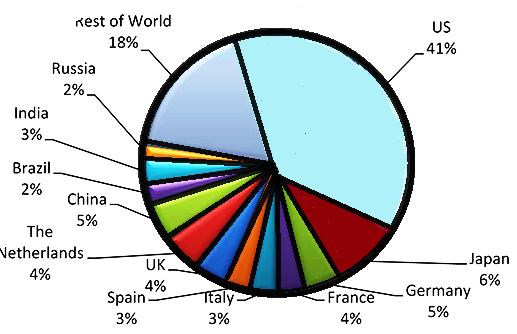
Increasing healthcare expenditure will aid the growth of the biopreservation market. Healthcare expenditure constitutes a significant part of the development budget of all countries. It consists of spending by both public and private sources on medical goods and services. Rapid economic development across the globe is expected to improve access to quality healthcare. Increasing healthcare expenditure will lead to a rise in the demand for quality healthcare and will be an important growth driver for the biopreservation market.
According to estimates from the World Bank, global healthcare spending increased at a CAGR of 6.97% from 2003 to 2013, from USD 3,786 Billion in 2003 to USD 7,427 Billion in 2013. In this period, public healthcare spending increased at a CAGR of 7.28%, from USD 2,198 Billion in 2003 to USD 4,440 Billion in 2013. This high growth rate, along with the substantial size of healthcare spending, will act as an important driver for bio banks, hospitals and gene banks, which are the major end-user segments of the biopreservation media & equipment market.
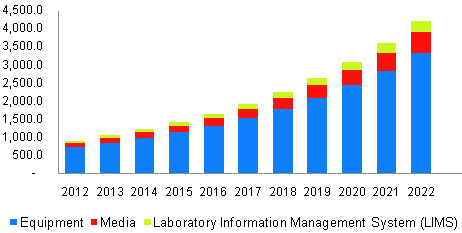
The biopreservation market is segmented on the basis of by products, biospecimens, applications, and end users. Products segments included in the report are biopreservation media & biopreservation equipment. Biopreservation media had the largest share of the biopreservation media & equipment market in 2015 and biopreservation equipment are expected to grow at the highest CAGR between 2015 and 2020. The biopreservation media segment is further divided on the basis of type into nutrient media, sera and growth factors & supplements. Biopreservation equipment segment is further divided into temperature control systems, incubators, centrifuges, alarms & monitoring systems, accessories and other equipment. Temperature control systems segment is further classified into freezers, refrigerators, cryogenic storage systems, thawing equipment.
On the basis of biospecimens, the report is segmented into human tissue samples, stem cells, organs and other biospecimens. On the basis of applications; the report is segmented into therapeutic, research, clinical trials and other applications. The therapeutic applications had the largest share of the biopreservation media & equipment market in 2015. The research applications are expected to one of the fastest growing applications between 2015 and 2020.The scope of US biobanks are morr than the UK biobanks.
The geographic segments included in this report are North Americas, Europe, Asia and Rest of the World (RoW). North America has the largest share of this market in 2015, while Asia is expected to grow at the fastest rate during the forecast period. Growth in the Asian biopreservation media & equipment market will primarily be driven by the increasing healthcare spending and growing population in this region.
The major players in the biopreservation media, Cryopreservation & equipment market include Thermo Fisher Scientific, Inc. (U.S.), Sigma-Aldrich Corporation (U.S.), VWR Corporation (U.S.), Biolife Solutions, Inc. (U.S.), Lifeline Scientific, Inc. (U.S.), Cesca Therapeutics, Inc. (U.S.), BioCision, LLC (U.S.), Core Dynamics, Ltd. (Israel), Custom Biogenic Systems, Inc. (U.S.), So-Low Environmental Equipment Co., Inc. (U.S.) and Princeton Cryotech, Inc. (U.S.).
Conference Highlights
- Biobanking & expertise networks
- Bio specimen and Biorepository
- Bio preservation and its Advances
- Tissue engineering
- Stem cell and Stem cell biobanking
- Vitrification
- Cryopreservation methods
- Next generation Biobanking
- Quality management in Biobanking
- Scaffolds for Tissue Engineering
- Fertility preservation
- Human cancer biobank
- Biobanking for rare disease
- Ethical issues in biobanking
- Biobank sustainability: current status and future prospects
To share your views and research, please click here to register for the Conference.
To Collaborate Scientific Professionals around the World
| Conference Date | November 9-10, 2018 | ||
| Sponsors & Exhibitors |
|
||
| Speaker Opportunity Closed | Day 1 | Day 2 | |
| Poster Opportunity Closed | Click Here to View | ||
Useful Links
Special Issues
All accepted abstracts will be published in respective Our International Journals.
- Journal of Tissue Science & Engineering
- Journal of Stem Cell Research & Therapy
- Journal of Cell Science & Therapy
Abstracts will be provided with Digital Object Identifier by






